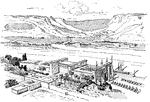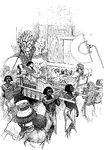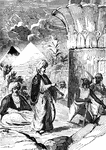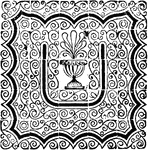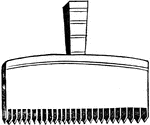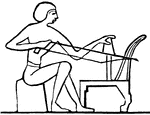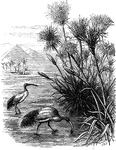Sowing
"Egyptian Sowing. The people were mainly agricultural, but employed rude methods of cultivation. In…

Acacia
"An Egyptian tree; the bark and pods are frequently used in tanning and the aqueous extract of the wood…
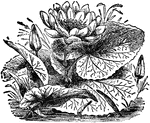
Egyptian Water Lily
"Lotus is a name given to various flowers, including several beautiful species of water lily, especially…

Sphinx
"Sphinx is a Greek word signifying 'strangler,' applied to certain symbolical forms of Egyptian origin,…

Cardo
A hinge or pivot. The first figure, in the annexed woodcut, is designed to show the general form of…

Liber
"The most common material on which books were written by the Greeks and Romans, was the thin coats or…
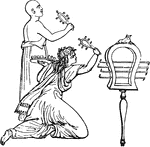
Sistrum
"The sistrum was an Egyptian instrument of music, used in certain ceremonies by that people, and especially…

Egyptian Hunting Party
"The hunting scenes are very numerous among their paintings, and the devices for capturing birds and…

Egyptian hunter
"Hounds were also used to pursue game, as may be perceived from the subjoined representation of a huntsman…

Egyptian Cattle Doctors
"Cattle doctors are exhibited performing operations upon sick oxen, bulls, deer, goats, and even geese."…

Egyptian Glassblowers
"The form of the bottle and the use of the blow-pipe are unequivocally indicated; and the green hue,…
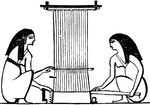
Egyptian Weaving
"The use of the spindle and loom, sewing, braiding, etc, form the subjects of many of the paintings,…

Egyptian chair
"The Egyptian chairs of which we have a great variety of representations, were not inferior in elegance…
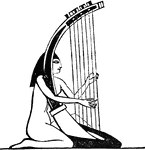
Egyptian harp
"That the Egyptians paid great attention to the study of music and had arrived at a very accurate knowledge…

Egyptian Band
"That the Egyptians paid great attention to the study of music and had arrived at a very accurate knowledge…

Egyptian musician
"That the Egyptians paid great attention to the study of music and had arrived at a very accurate knowledge…
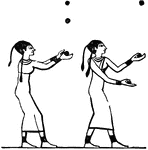
Egyptian Ball Game
"Some of the Egyptian female sports were rather of a hoydenish character, as the game of ball, in one…
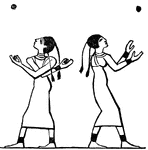
Egyptian Female Ball Game
"Some of the Egyptian female sports were rather of a hoydenish character, as the game of ball, in one…
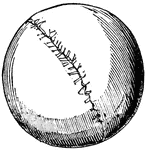
Egyptian Ball
"Some of the Egyptian female sports were rather of a hoydenish character, as the game of ball, in one…
Egyptian Doll
"Wooden dolls for children have also been discovered of various fasions, some of them precisely similar…

Egyptian Shop
"The Egyptian shops exhibited many curious scenes. Poulters suspended geese and other birds from a pole…
Egyptian Kitchen - Roasting a Goose
"A cook roasting a goose; he holds the spit with one hand, and blows the fire with a fan held in the…

Egyptian Wine-Press
"The following is a representation of a wine-press, in which the grapes are squeezed in a bag." —…
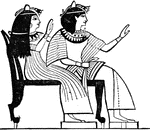
Egyptian Double Chair
"Usually kept as a family seat, and occupied by the master and mistress of the house, though occaisionally…

Egyptian Couch
"The Egyptian couches were executed in great taste. They were of wood, with one end raised, and receding…

Two Egyptian Boats
"Two boats moored to the bank of the river by ropes and stakes. In the cabin of one, a man inflicts…
Egyptian Needle
"The Egyptian needles were of the following fashion. They wrote with a reed, or rush, many of which…
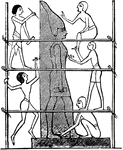
Egyptian Sculptors at Work
"Workmen are represented polishing and painting statues of men, sphinxes, and small figures; and two…

Egyptian Bellows
"Among the remarkable inventions of a remote era, may be mentioned bellows and siphons. The former were…
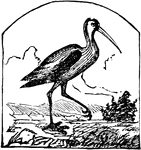
Ibis
A genus of wading birds, one species of which was regarded in ancient Egypt with a degree of respect…
Mummy
The bodies of those who were buried in the pyramids were preserved from decay by a secret process, known…

Lotus
A name derived from the lotus of Greek legend, and applied to various species of plants related to the…
Winged-Globe Design
An Egyptian design consisting of a small ball, on the sides of which are two asps with extended wings,…
